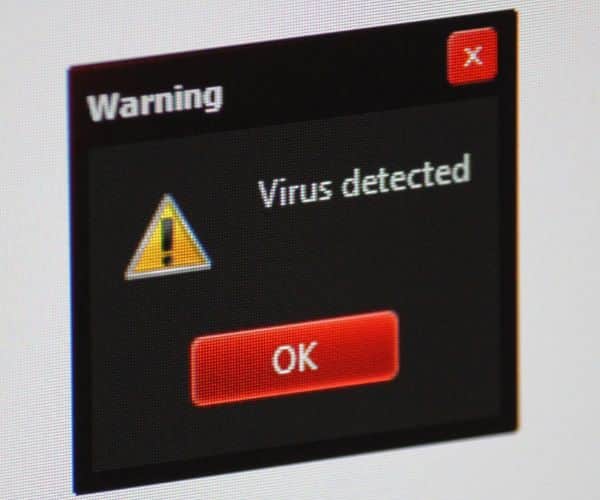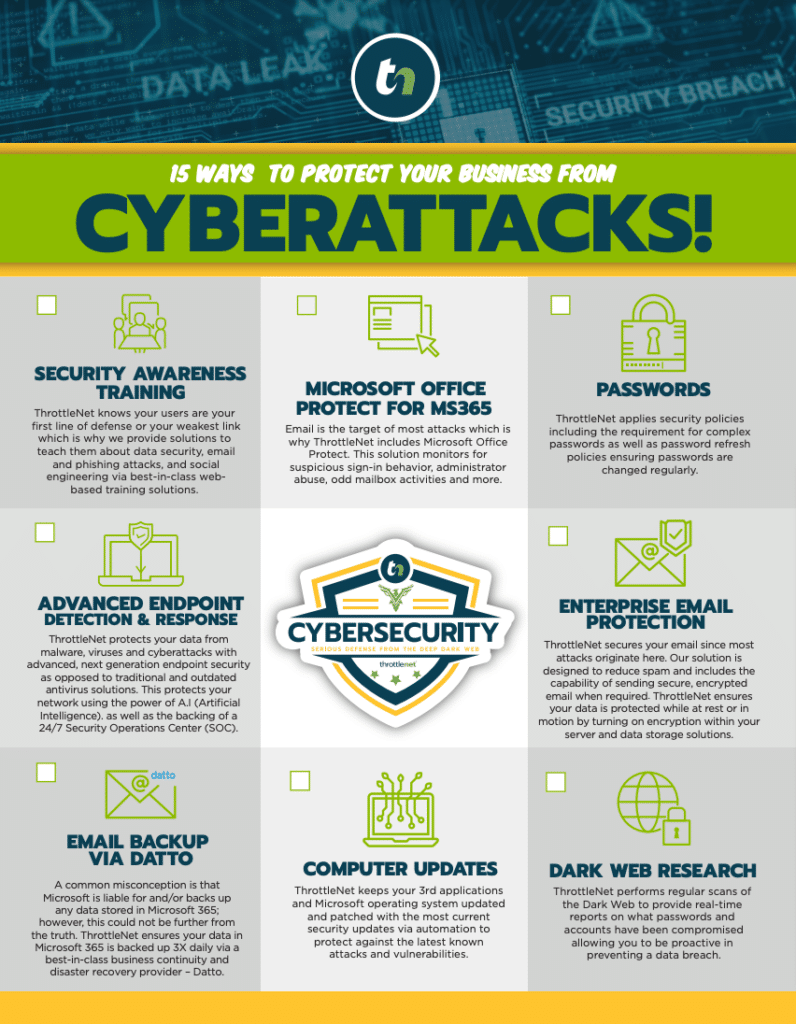When most people think about cybersecurity threats, the term “computer virus” often comes to mind, however, do computer viruses still exist? In short, no. The type of viruses that were prominent in the 1990s and early 2000s that conjure images of files getting corrupted, strange messages popping up, and data being erased is virtually extinct today.
Instead, the digital threat landscape has evolved significantly, and the old-fashioned computer virus has been replaced with more sophisticated and profitable forms of cyberattacks. In this article, we’ll explore why traditional computer viruses are no longer common, what they’ve been replaced with, and the driving factors behind this evolution.

The Classic Computer Virus: A Brief Overview
A computer virus is a type of malicious software (malware) that attaches itself to legitimate files or programs, replicating and spreading to other systems when those files or programs are shared. Viruses often caused a range of disruptive behaviors, from corrupting files to displaying annoying messages. The goal of these early viruses was often more about proving the skill of the hacker, showcasing technical prowess, or causing chaos rather than making money.
A Modern Age of Cyberattacks – Do Computer Viruses Still Exist?
1. Improved Security Measures
As the threat of viruses became more prevalent, the cybersecurity industry responded with improved protective measures. Antivirus software became more effective at detecting and neutralizing viruses, and operating systems were redesigned to be more secure. Modern antivirus programs use a combination of signature-based detection, heuristic analysis, and machine learning to identify suspicious behavior, making it more difficult for a traditional virus to spread.
2. Changing Objectives of Cybercriminals
Early viruses were often created by hobbyists or individuals looking for notoriety. However, the motivations of cybercriminals have changed over time, shifting towards profit and data exploitation. The classic computer virus, which often simply corrupted files or slowed down systems, offered no real financial incentive to attackers.
Today’s cybercriminals are more interested in financial gain, data theft, and espionage. This shift in motive has led to the development of more sophisticated types of malware that can generate profit for attackers.
3. Networked Devices and Connectivity
Modern computing environments are vastly more interconnected than those of the past. Instead of infecting individual systems via floppy disks or email attachments, attackers can now target entire networks or groups of devices through other means. The interconnected nature of devices has paved the way for new types of threats that can exploit vulnerabilities on a larger scale.
What Has Replaced Computer Viruses?
1. Ransomware
Ransomware has emerged as one of the most prevalent and damaging forms of modern cyberattacks. Unlike traditional viruses that merely damaged or deleted files, ransomware encrypts the victim’s data and demands a ransom payment (usually in cryptocurrency) for its release. The rise of ransomware is driven by the direct financial incentive it provides to attackers, and the potential payouts can be significant, especially when targeting businesses and government institutions.
Ransomware attacks are often spread through phishing emails, malicious downloads, and exploiting vulnerabilities in outdated software. The damage caused by ransomware is substantial, leading to significant downtime, data loss, and often millions of dollars in ransom payments.
2. Trojans and Spyware
Trojans are another type of malware that has largely replaced traditional viruses. Trojans disguise themselves as legitimate software, tricking users into downloading and running them. Once installed, they create backdoors for attackers to access the victim’s system, steal sensitive information, or gain control over the device.
Spyware is also prevalent today and is used to collect information about the victim without their knowledge. This could include login credentials, banking information, or browsing habits. Spyware can be used for both financial gain and corporate espionage.
3. Worms
While traditional viruses required human action (such as opening a file) to spread, worms can propagate themselves across networks without user intervention. Modern worms are often designed to exploit vulnerabilities in network protocols or software, enabling them to spread rapidly across connected devices.
4. Advanced Persistent Threats (APTs)
Advanced Persistent Threats are sophisticated, multi-stage cyberattacks that target specific organizations, often with the aim of stealing sensitive information or causing long-term disruption. APTs are highly targeted and involve a combination of tactics, such as social engineering, spear-phishing, and exploiting vulnerabilities, to infiltrate a network. Once inside, attackers move laterally, gathering data or establishing a foothold for ongoing espionage.
The goal of APTs is often to remain undetected for extended periods, with the average being around 267 days, allowing attackers to continuously extract valuable information. This represents a marked departure from traditional viruses, which were typically designed to be disruptive and visible.
5. Cryptojacking
Cryptojacking is a form of cyberattack where attackers use compromised devices to mine cryptocurrency without the owner’s consent. Cryptojacking code can be injected into websites or distributed through malicious software. This type of malware aims to profit from the victim’s computational power without causing direct damage, making it a more subtle but still lucrative alternative to older types of malware.
Why Modern Threats Are More Dangerous
1. Financial Motivation
Modern malware is often built with the express purpose of making money, which has led to its increased sophistication. Whether it’s through ransomware payments, stealing sensitive financial information, or mining cryptocurrency, attackers now have strong financial motivations to innovate and stay ahead of security measures.
2. Targeted Attacks
Traditional viruses were generally untargeted—they spread to anyone and everyone they could reach. Modern cyberattacks, however, are often highly targeted. Attackers conduct extensive research on potential victims, using social engineering to ensure their attacks are effective. This makes modern attacks harder to defend against, as they often exploit human psychology as much as technical vulnerabilities.
3. Polymorphic Malware
Today’s malware is often polymorphic, meaning it changes its code every time it is executed to evade detection by antivirus programs. This adaptability allows malware to avoid traditional signature-based detection, making it much harder to identify and remove.
How to Stay Protected
Given the evolution of the threat landscape, it’s critical to adapt and stay protected from these modern forms of cyberattacks:
- Keep Software Updated: Regularly update operating systems, applications, and antivirus software to patch vulnerabilities that could be exploited.
- Use Endpoint Security Solutions: Implement advanced security solutions, including antivirus, anti-malware, and managed detection and response (MDR) systems.
- Employ Multi-Factor Authentication (MFA): Use MFA to add an additional layer of security to your accounts, making it harder for attackers to gain unauthorized access.
- Employee Training: Educate employees on recognizing phishing attempts, social engineering tactics, and safe internet practices.
- Regular Backups: Implement a robust backup strategy that includes keeping offline copies of critical data. This is especially useful in the event of a ransomware attack.
- Network Segmentation: Segregate critical parts of your network to minimize the spread of malware in case of an infection.
- Monitor for Unusual Activity: Employ intrusion detection systems (IDS) and regularly monitor for unusual activity that could indicate a potential compromise.
You were wonder, “Do computer viruses still exist?” In summary, the traditional computer virus, once the hallmark of malicious cyber activity, has largely faded from prominence, replaced by more sophisticated, targeted, and financially motivated threats. Ransomware, Trojans, worms, APTs, and cryptojacking now dominate the threat landscape, exploiting new vulnerabilities and targeting victims with greater precision. The evolution of cybersecurity threats requires individuals and businesses to stay vigilant, employ modern security measures, and continuously adapt to an ever-changing digital landscape. Understanding these new threats and implementing proactive measures is the key to staying safe in a world where cybercrime is constantly evolving.

Chris Montgomery
ThrottleNet Sales Director
[email protected]



